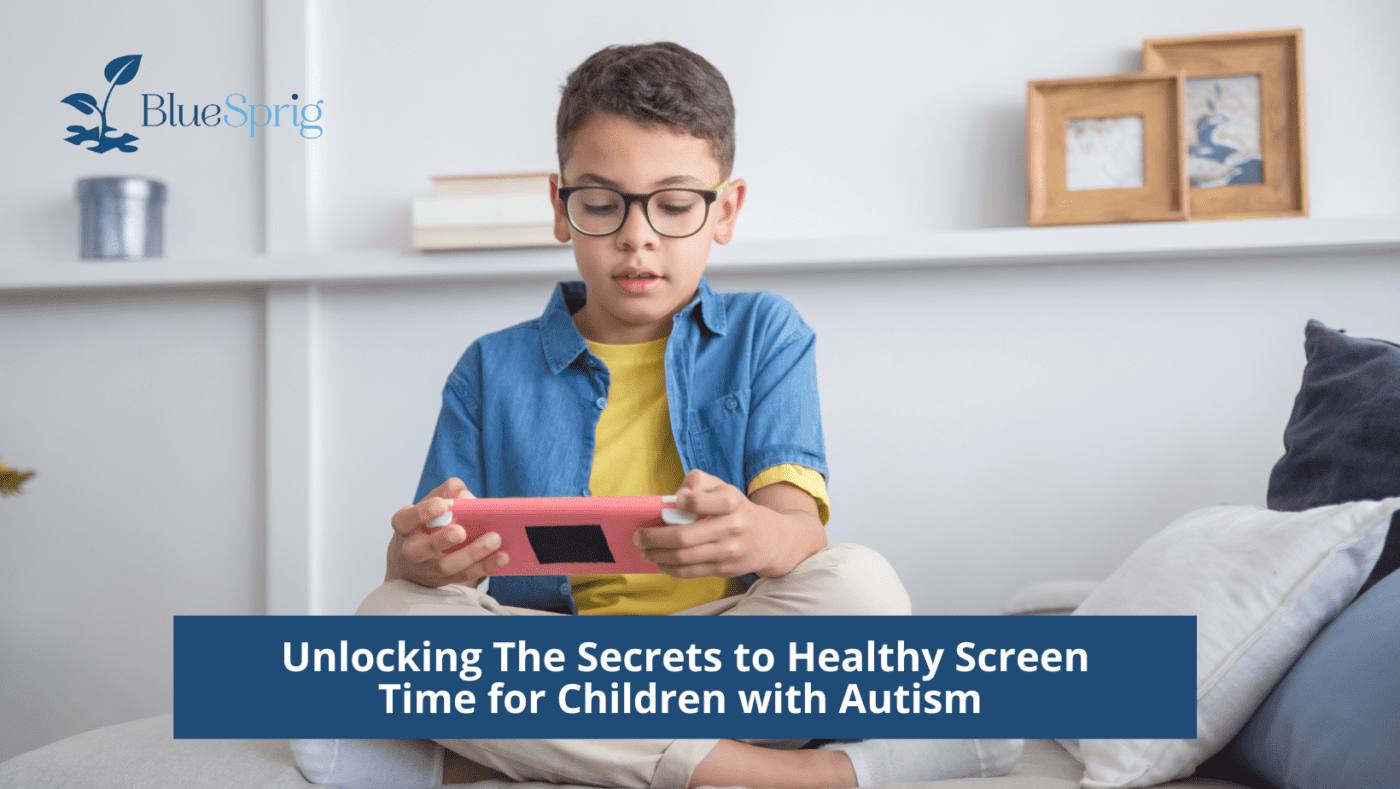Are you a parent or caregiver of a child with autism spectrum disorder (ASD), struggling to find a balance between screen time and other activities? You are not alone. In today’s digital age, screen time has become a prominent part of our daily lives, especially for children. However, for children with autism, screen time can present unique challenges. That’s why BlueSprig is here to help you unlock the secrets to healthy screen time for your child.
As a leading provider of ABA services for children with autism, we understand the importance of finding a balance between technology and other activities for your child’s overall well-being. Let’s explore how to effectively manage screen time for your child with BlueSprig’s expert tips and strategies.
Understanding Autism and Screen Time
Regulating screen time for children requires an understanding of their unique needs and challenges. Autism is a developmental disorder that affects social interaction, communication, and behavior. Screens can provide a stimulating (visual and auditory) way to access information. However, excessive screen time can hinder their social and emotional development and lead to difficulties in other areas of their lives.
Understanding how to strike a balance between screen time and other activities is crucial. It’s important to consider the individual needs and preferences of each child. Some autistic children may benefit from structured and limited screen time, while others may require more flexibility.
Practical Tips for Implementing Structured and Productive Screen Time
Here are some practical tips to regulate screen time and create a healthy balance for your child.
Firstly, establish a schedule and set clear boundaries for screen time. This will help your child understand when it’s time to engage with technology and when it’s time for other activities. Visual timers or reminders can be useful tools to aid in transitioning from screens to other tasks.
Incorporate interactive and educational apps or programs such as Autism ABC, Otsimo, or ABCmouse that promote learning and social skills development. BlueSprig clinicians can also recommend specific resources that are tailored to your child’s needs and interests.
Engaging in joint screen time activities with your child can foster communication and bonding. This can involve playing interactive games, watching educational videos together, or exploring new interests together.
Lastly, limiting technology before bedtime can also have a positive impact on a child’s sleep quality. A few alternative calming activities for children are reading a book, listening to calming music, or practicing meditation or breathing exercises to help regulate emotions and create a relaxing environment for a better night’s rest.
How to Encourage Offline Activities and Balance in the Digital Age
In this digital age, it’s important to find a balance between screen time and offline activities for your child. While technology can provide educational and entertainment benefits, it’s crucial to encourage other forms of engagement as well. Encourage your child to participate in physical activities, such as outdoor play or sports, which can help improve their social skills and overall well-being. Engage in creative activities like art, music, or cooking to stimulate their senses and promote self-expression. Set aside dedicated family time for board games, puzzles, or simply enjoying each other’s company. By creating a healthy balance between online and offline activities, you can support your autistic child’s development and enhance their quality of life.
